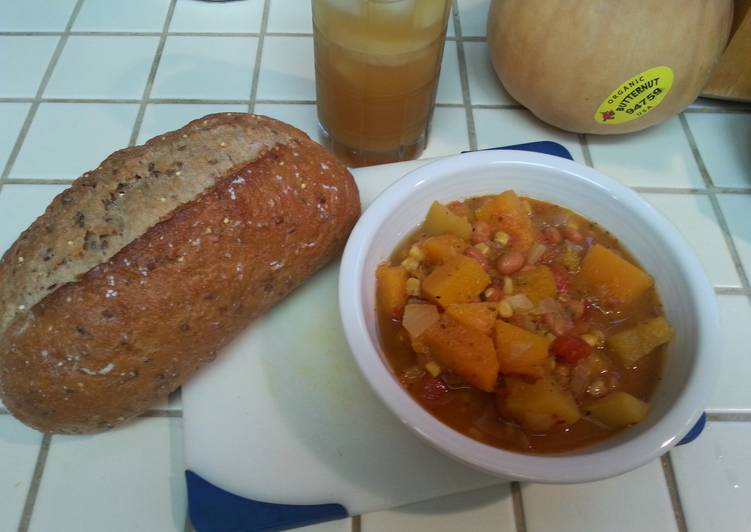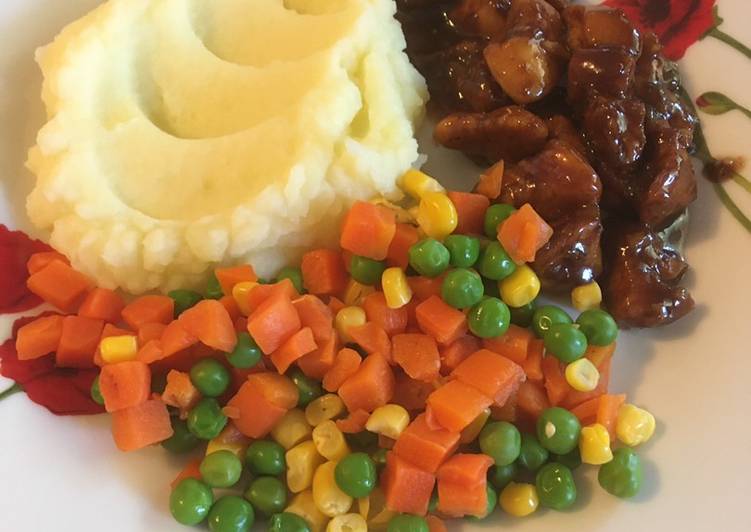
Hello everybody, it is me, Dave, welcome to our recipe page. Today, I will show you a way to prepare a distinctive dish, native american three sisters stew. It is one of my favorites. This time, I am going to make it a bit tasty. This is gonna smell and look delicious.
Native American Three Sisters Stew is one of the most well liked of recent trending foods in the world. It is enjoyed by millions every day. It is easy, it’s quick, it tastes yummy. They’re nice and they look fantastic. Native American Three Sisters Stew is something that I’ve loved my entire life.
In Native American mythology, squash, corn, and beans are known as of the "three sisters" — the very crops that the harvest festival of Thanksgiving is meant to celebrate! If you bake your pumpkin or squash a day ahead, the stew will come together in a snap. Native American "Three Sisters" Stew About the Recipe : This delicious vegetable stew is packed with chili flavor and chunks of squash, beans, and corn.
To get started with this recipe, we must prepare a few components. You can have native american three sisters stew using 10 ingredients and 10 steps. Here is how you can achieve it.
The ingredients needed to make Native American Three Sisters Stew:
- Take 1 lb winter squash (such as butternut, Hubbard or sweet pumpkin)
- Prepare 1 medium onion chopped
- Take 1 tbsp olive oil
- Get 14 oz can of diced tomatoes
- Prepare 2 cup canned pinto beans, drained
- Prepare 2 cup corn ( fresh, canned or frozen
- Prepare 1 cup chicken broth or vegetable broth
- Make ready 1 packages CuisineMentor native american three sisters stew Gourmet Spice Blend
- Get 1 salt and pepper to taste
- Get 1/3 cup minced fresh cilantro
Native Americans were excellent farmers and discovered what is known today as companion planting. Corn, beans, and squash were planted together in the same hole. The Three Sisters crops were responsible for the surplus food that created an expanded population throughout the extended Mississippi. • This Native American tradition is based on the circle of life or the idea that all living things rely on each other for survival. • The traditional Three Sisters garden forms an ecosystem by creating a community of plants. This system creates a beneficial relationship between the three plants-each plant helps the others grow.
Instructions to make Native American Three Sisters Stew:
- Peel and seed squash, and cut into approx 1/2" squares
- Heat oil in pot. Add onions and saute until soft, about 5 minutes.
- Add the chopped squash, tomatoes, beans, corn, and broth and the package of Native American Three Sisters Stew Spice Blend.
- Stir to blend well.
- Bring to a simmer.
- Gently Simmer until squash is tender, about 20 to 25 minutes.
- If needed add more broth
- Adjust salt and pepper to taste
- Then let stew stand, off of heat for one hour. To let the flavors blend.
- Then reheat, add the cilantro and serve. Enjoy!!
Here is an interesting a vegetable and bean soup called Three Sisters Soup. This is actually a Native American recipe and the three "sisters" refer to corn, beans and squash! Native Americans in California, such as the Pomo and Miwok tribes, relied on their ample bounty of acorns when coming up with their meals. An important traditional form of agriculture is the use of intercropping strategies, sometimes called mixed cropping or milpa agriculture, where different crops are planted together, rather than in big monoculture fields as farmers do today. Having worked with the Native American community in New York, the three sisters reference made me smile with great memories of those wonderful, American ingredients.
So that’s going to wrap this up with this exceptional food native american three sisters stew recipe. Thanks so much for reading. I am confident you will make this at home. There’s gonna be more interesting food at home recipes coming up. Don’t forget to bookmark this page on your browser, and share it to your family, colleague and friends. Thank you for reading. Go on get cooking!


